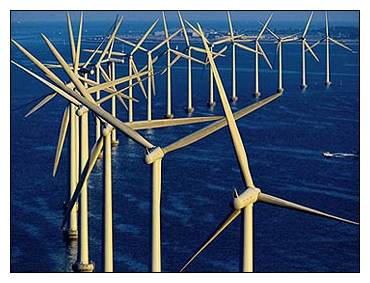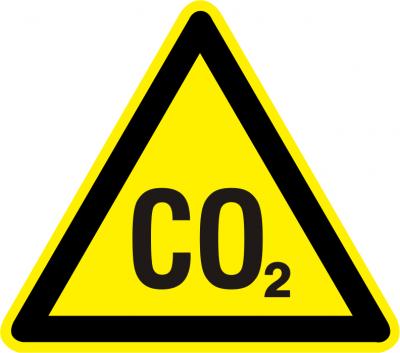The growing interest among national and regional governments in curbing carbon emissions has led to rapid expansion of the global carbon market.
Worldwide, carbon trading reached a value of $59.2 billion in 2007, up 80 percent over 2006, according to estimates from the market research group Point Carbon. The European Union’s Emissions Trading Scheme (EU-ETS) is the largest carbon market to date, with a trading volume of more than 1 billion tons of carbon dioxide (CO2) per year. The EU-ETS is helping the EU meet its targets under the Kyoto Protocol at an annual cost of $4.3-$5.4 billion, or less than 0.1 percent of the region’s gross domestic product. In 2006, the EU-ETS more than tripled the volume traded during the previous year.
Voluntary markets are also showing strong growth, as businesses, organizations, and individuals purchase carbon credits to offset their greenhouse gas emissions. Ecosystem Marketplace estimates that at least 23.7 million tons of CO2 equivalent were exchanged over-the-counter or through formal market mechanisms in 2006. The Chicago Climate Exchange, a voluntary market based in the United States, reports that its trading volume doubled in 2007, to 22.9 million tons.
The big question however is whether or not these markets are even effective in addressing climate change. Government inaction in the United States (the world’s largest CO2 emitter *china might be catching up rapidly* and the only industrial nation that has not ratified the Kyoto Protocol) means that no matter what the rest of the world does without the US on board it threatens to mute the concerted efforts of the 176 other countries (plus the EU) that have ratified the Kyoto Protocol. Even stricter international targets and national carbon caps are needed for significant reductions to occur if the US will not be part of any world wide solution.
Several state and regional initiatives in the United States and Canada are gaining momentum. Under the Regional Greenhouse Gas Initiative, set to begin in 2009, at least 10 northeastern U.S. states have committed to cap regional CO2 emissions at 1990 levels by 2014, and to reduce them by 10 percent below that level by 2018. Similarly, the Western Climate Initiative, involving several Western U.S. states and two Canadian provinces, has set a goal of bringing regional emissions to 15 percent below 2005 levels by 2020 by establishing a market mechanism.

It would seem however that the market is not going to wait for government to get involved. Today three of the world’s leading financial institutions announced the formation of The Carbon Principles, climate change guidelines for advisors and lenders to power companies in the United States. They are basically a set of rules that govern how banks will finance coal and other carbon heavy power plants. These huge banks are scared that in the future carbon emissions are going to cost a lot of money and they don’t want to end up holding the loan to a bunch of coal plants that go out of business because they can’t afford to pay off their carbon emission costs.
The Principles were developed in partnership by Citi, JPMorgan Chase and Morgan Stanley, and in consultation with leading power companies American Electric Power, CMS Energy, DTE Energy, NRG Energy, PSEG, Sempra and Southern Company. Environmental Defense and the Natural Resources Defense Council, environmental non-governmental organizations, also advised on the creation of the Principles. For thous unlikely to listen to the “hippies” listen to the market, for it has spoken.
This effort is the first time a group of banks has come together and consulted with power companies and environmental groups to develop a process for understanding carbon risk around power sector investments needed to meet future economic growth and the needs of consumers for reliable and affordable energy. The consortium has developed an Enhanced Diligence framework to help lenders better understand and evaluate the potential carbon risks associated with coal plant investments. I think the really interesting thing here is that they admit that there IS a risk. They are finally admitting that carbon emissions have a negative and expensive cost on not only the environment but the economy as well.
“There was full and frank dialogue around the table,” said Matt Arnold, director of Sustainable Finance, which helped coordinate the development of the Principles and Enhanced Diligence process. “There was a remarkable amount of debate and exchange of information and views among the banks, power companies and environmental organizations. The dialog resulted in a rigorous analysis of the carbon risks in power investments, and sets the stage for further discussion.”
Citi, JPMorgan Chase and Morgan Stanley have pledged their commitment to the Principles to use as a framework when talking about these issues with power company clients.
The Principles are:
Energy efficiency.
An effective way to limit CO2 emissions is to not produce them, duh. The signatory financial institutions will encourage clients to invest in cost-effective demand reduction, taking into consideration the value of avoided CO2 emissions. They will also encourage regulatory and legislative changes that increase efficiency in electricity consumption including the removal of barriers to investment in cost-effective demand reduction.

Renewable and low carbon distributed energy technologies.
Renewable energy and low carbon distributed energy technologies hold considerable promise for meeting the electricity needs of the US while also leveraging American technology and creating jobs, again duh. The principles will encourage clients to invest in cost-effective renewables and distributed technologies, taking into consideration the value of avoided CO2 emissions. They will also encourage legislative and regulatory changes that remove barriers to, and promote such investments (including related investments in infrastructure and equipment needed to support the connection of renewable sources to the system). Frankly I found that pretty freaking surprising, we have a bunch of banks and financial institutions pledging to fight for renewables in congress. Thats a big vote for the future of renewable energy. They will consider production increases from renewable and low carbon generation as part of the Enhanced Diligence process and assess their impact on proposed financings of certain new fossil fuel generation.
Conventional and advanced generation.
In addition to cost effective energy efficiency, renewables and low carbon distributed generation, investments in conventional or advanced generating facilities will be needed to supply reliable electric power to the US market. This may include power from natural gas, coal and nuclear technologies. Due to evolving climate policy, investing in CO2-emitting fossil fuel generation entails uncertain financial, regulatory and certain environmental liability risks. It is the purpose of the Enhanced Diligence process to make sure the full cost of these plants (ecological and financial) are fully realized BEFORE they get a big loan from the bank. They will encourage regulatory and legislative changes that facilitate carbon capture and storage (CCS) to further reduce CO2 emissions from the electric sector.
With the rapid growth of global carbon markets, and some of the biggest movers and shakers in the financial industry getting behind a global CO2 regulatory framework it behooves the government of the US to take the reigns and make sure that there is some sort of stable effective framework in place so that industry can reliably plan for the future. I worry that the patchwork model may create a confusing and competing set of “rules” that make it hard for industry to plan around. If the government doesn’t act to clarify this market, chaos has the possibility to take over. I am however encouraged that so many large institutions are springing up to support reduction of emissions.

I found your site on technorati and read a few of your other posts. Keep up the good work. I just added your RSS feed to my Google News Reader. Looking forward to reading more from you.
Allen Taylor